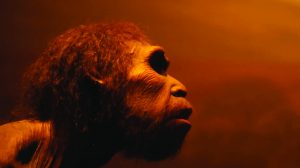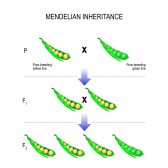Table of Contents
Mantis Definition
A mantis (plural: mantises or mantes) refers to any of the insects that belong to the order Mantodea (mantids). The most striking features are the highly mobile, triangular head, large compound eyes, and their raptorial legs that are positioned like they are praying.

The term “mantis” came from the Ancient Greek μάντις (mántis), meaning “soothsayer” or “prophet”. (Ref. 1, 2) The name was coined by the German entomologist, Herman Burmeister, in 1838. (Ref. 2) Mantises have a long prothorax and a powerful pair of forelimbs that are folded as if in prayer. Thus, any of these mantids is called “praying mantis”. However, in Europe and other regions, the name “praying mantis” refers specifically to the species, Mantis religiosa. (Ref. 2) Most of them are ambushed predators, catching insects, small birds, and other small animals. Others are pursuing their prey on the ground. (Ref. 2) They are found globally, particularly in temperate and tropical habitats. Variant: mantid.
Characteristics of Mantodea (Mantids)
The order Mantodea has over 2500 species in 447 genera and 24 families. (Ref. 2) Most species are from the family Mantidae. They are distinguished from other similarly slender, elongated insects (e.g. grasshoppers, leaf insects, and stick insects) by their triangular heads with bulging eyes and spiked forelimbs (called raptorial foreleg) that are greatly enlarged and adapted for catching and gripping prey. Mantises are often seen stationary and in an upright position with their forelegs folded as if praying and four posterior legs.
The thorax consists of a prothorax, a mesothorax, and a metathorax. The prothorax is, in general, the longest thoracic segment. It bears the head and the forelegs. The articulation of the neck allows a wide range of head movement and thus enables some species to rotate the head nearly 180 degrees. Their compound eyes consist of several ommatidia (up to 10,000). (Ref. 2) The dark spot on the compound eye is called a pseudopupil. Three other simple eyes are located between the compound eyes. (Ref. 3)
Some mantises have no wings. They are referred to as apterous. Those with wings may be categorized as macropterous (with long wings), brachypterous (with short wings), and micropterous (with vestigial wings). Some winged mantises have two pairs of wings. The outer wings (called tegmina) are leathery and opaque. These wings are used primarily for camouflage and as a shield. The inner wings are more delicate and transparent. They are the major organs for flight. (Ref. 2)
The abdomen consists of ten tergites and ends in a pair of cerci. The females have thicker abdomen than the males.
Behavior
Many species are diurnal. However, other species still fly at night as there are fewer predators. (Ref. 2) Some female mantises practice sexual cannibalism by which they eat their mates right after or during copulation. (Ref. 3) This provides the female an available prey. Consequently, female mantid does not have to hunt afterward.
Ecology
Most mantises are ambush predators of arthropods, e.g. crickets, moths, grasshoppers, flies, and other insects, including their own kind. (Ref. 4, 5) They do not have venom. Thus, they feed on their prey alive. Larger mantises prey on small vertebrates, e.g. lizards, small birds, fishes, and frogs.
Evolution
The first appearance of mantises is reckoned to be about 152.1 mya and their closest relatives are surmised to be the termites and the cockroaches of the superorder Dictyoptera. (Ref.2)
Examples
The European mantis, Mantis religiosa, is a winged mantid species belonging to the family Mantidae. It is found in Southern Europe, Asia, Africa, North America, and Australia. Other examples of mantises are as follows:
• Metilia brunnerii
• Acontista concinna
• Brancsikia freyi
• Empusa pennata (conehead mantis)
• Brunneria borealis (Brunner’s mantis)
• Chaeteessa burmeisteri
• Angela guianensis
• Hestiasula brunneriana
• Stenophylla cornigera
References
- Stagmomantis carolina. (2020). Animal Diversity Web. https://animaldiversity.org/accounts/Stagmomantis_carolina/
- mantids – Encyclopedia of Life. (2020). Eol.Org. https://eol.org/pages/416
- Praying Mantis | National Geographic. (2010, September 10). Nationalgeographic.Com. https://www.nationalgeographic.com/animals/invertebrates/p/praying-mantis/
- Hurd, I. E. (1999). “Ecology of Praying Mantids”. In Prete, Fredrick R.; Wells, Harrington; Wells, Patrick H.; Hurd, Lawrence E. (eds.). The Praying Mantids. Johns Hopkins University Press. pp. 43–49.
©BiologyOnline. Content provided and moderated by BiologyOnline Editors.







